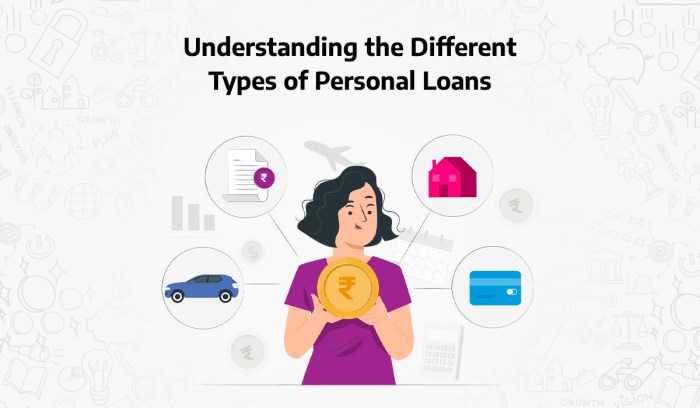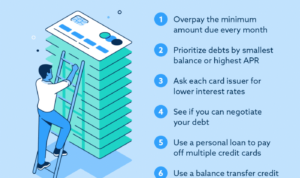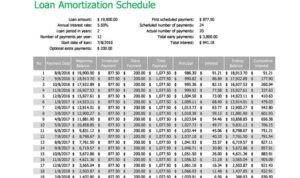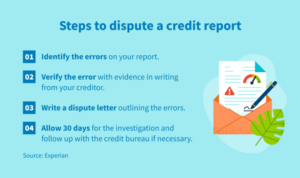Diving into the world of personal loans is like uncovering a hidden treasure chest of financial possibilities. From deciphering the different types to navigating interest rates, this guide will equip you with the knowledge needed to make informed decisions about borrowing money.
So, buckle up and get ready to explore the ins and outs of personal loans in a way that’s both informative and engaging.
What are Personal Loans?

Personal loans are a type of loan that individuals can borrow from financial institutions, such as banks or credit unions, to meet various financial needs. Unlike specific loans like auto loans or mortgages, personal loans are more flexible and can be used for a wide range of purposes.
Examples of Common Uses for Personal Loans
- Debt consolidation: Combining multiple debts into one loan with a lower interest rate.
- Home improvements: Renovating or repairing your home to increase its value.
- Medical expenses: Covering unexpected medical bills or procedures.
- Education: Paying for tuition, books, or other educational expenses.
- Weddings: Financing a wedding or other significant life events.
Importance of Credit Scores in Obtaining Favorable Personal Loan Terms
Your credit score plays a crucial role in determining the terms of your personal loan. A higher credit score typically results in lower interest rates and better loan terms, while a lower credit score may lead to higher interest rates or difficulty in obtaining a loan. Lenders use credit scores to assess the risk of lending to you and to determine the interest rate you qualify for.
Types of Personal Loans
When it comes to personal loans, there are different types available to meet various financial needs. Let’s dive into the details of each type to understand their features and when they are most suitable.
Secured Personal Loans
Secured personal loans are backed by collateral, such as a car or a house. This type of loan typically offers lower interest rates since the lender has the security of the collateral in case the borrower defaults. Secured personal loans are suitable for individuals looking to borrow a large sum of money for a major purchase, like buying a new vehicle or home renovations.
Unsecured Personal Loans
Unsecured personal loans do not require any collateral and are based solely on the borrower’s creditworthiness. These loans usually come with higher interest rates compared to secured loans since there is no collateral to mitigate the lender’s risk. Unsecured personal loans are ideal for individuals who need quick access to funds for emergencies or smaller expenses, like medical bills or home repairs.
Fixed-Rate Personal Loans
Fixed-rate personal loans have a set interest rate that remains constant throughout the loan term. Borrowers know exactly how much they need to repay each month, making budgeting easier. Fixed-rate personal loans are a good choice for individuals who prefer stability and predictability in their monthly payments, especially for long-term financial goals like debt consolidation or home improvement projects.
Variable-Rate Personal Loans
Variable-rate personal loans have interest rates that can fluctuate based on market conditions. While the initial rate may be lower than fixed-rate loans, there is a risk of the rate increasing over time, leading to higher monthly payments. Variable-rate personal loans are suitable for individuals who are comfortable with some level of uncertainty and believe that interest rates may decrease in the future, particularly for short-term financial needs like funding a vacation or a wedding.
Understanding Interest Rates
When it comes to personal loans, interest rates play a crucial role in determining how much you’ll end up paying back over time. Understanding how interest rates work and what factors influence them can help you secure the best deal possible.
Interest rates on personal loans are essentially the cost of borrowing money from a lender. This rate is expressed as a percentage and is added to the principal amount borrowed. The total amount you repay includes both the principal amount and the interest charged by the lender.
Factors Influencing Personal Loan Interest Rates
Factors that can influence personal loan interest rates include:
- Your credit score: A higher credit score typically means you qualify for lower interest rates, as lenders view you as less risky.
- Loan amount and term: Larger loan amounts and longer repayment terms may result in higher interest rates.
- Income and employment: Lenders may consider your income stability and employment status when determining your interest rate.
- Market conditions: Overall economic conditions and interest rate trends can impact the rates offered by lenders.
Tip: Improving your credit score before applying for a personal loan can help you secure a lower interest rate.
Tips for Securing the Best Interest Rates
- Shop around: Compare offers from different lenders to find the most competitive interest rates.
- Negotiate: Don’t be afraid to negotiate with lenders to see if you can lower the interest rate offered.
- Consider a co-signer: If you have a lower credit score, having a co-signer with good credit can help you qualify for a lower interest rate.
- Avoid unnecessary fees: Be aware of any additional fees that may be added to your loan, as these can increase the overall cost.
Loan Repayment Strategies
When it comes to repaying personal loans, having a solid strategy in place can help you manage your debt effectively and avoid financial stress. Below are some key strategies to consider:
Standard Repayment Plan
The standard repayment plan involves making fixed monthly payments over a set period of time until the loan is fully repaid. This plan typically results in higher monthly payments but allows you to pay off the loan faster, ultimately saving you money on interest in the long run.
Graduated Repayment Plan
With a graduated repayment plan, your monthly payments start off lower and then increase gradually over time. This can be beneficial for borrowers who expect their income to increase in the future, as it provides some flexibility in the early years of repayment.
Income-Driven Repayment Plan
Income-driven repayment plans adjust your monthly payments based on your income and family size. While this can make repayments more manageable, it may result in paying more interest over the life of the loan. These plans are often used by borrowers facing financial hardship.
Tips to Avoid Defaulting
- Set up autopay to ensure timely payments and avoid late fees.
- Create a budget to track your expenses and prioritize loan payments.
- Consider making extra payments to pay off the loan faster and reduce interest costs.
Risks and Considerations
When considering taking out a personal loan, it is crucial to understand the potential risks involved and carefully assess your financial situation. Reading the fine print and fully comprehending the terms and conditions of the loan are essential steps to take before committing to borrowing money. Here are some key considerations to keep in mind:
Potential Risks of Personal Loans
- High Interest Rates: Personal loans often come with higher interest rates compared to other forms of borrowing, which can lead to significant costs over time.
- Impact on Credit Score: Failing to make timely repayments on a personal loan can negatively affect your credit score, making it harder to secure credit in the future.
- Debt Accumulation: Taking out a personal loan without a clear repayment plan can result in accumulating debt that becomes difficult to manage.
Importance of Reading the Fine Print
Before signing any loan agreement, it is crucial to carefully read and understand all the terms and conditions Artikeld in the fine print. Pay close attention to details such as interest rates, fees, repayment schedule, and any penalties for late payments.
Assessing Your Financial Situation
Prior to applying for a personal loan, take the time to evaluate your current financial circumstances. Calculate your income, expenses, and existing debts to determine whether taking on additional debt through a personal loan is a feasible and responsible decision.






